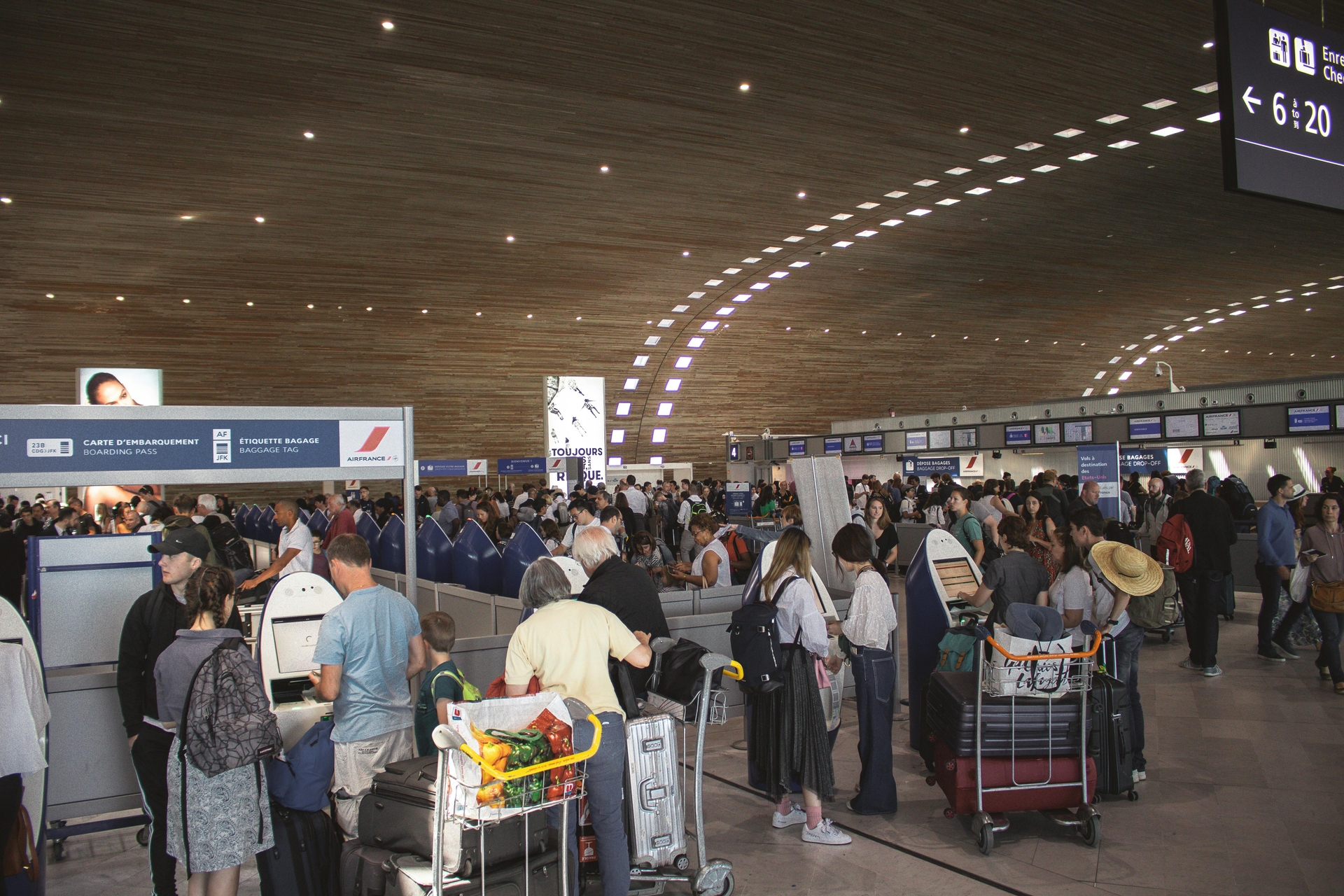
AeroGenie — Your Intelligent Copilot.
How AI Helps Forecast Unscheduled Maintenance Demand in Airlines
April 10, 2025
Discover how AI and Gen AI are helping airlines tackle unscheduled maintenance aviation challenges — from smarter failure prediction to AI copilots that reduce downtime and costs.
The aviation industry is always neck-deep in challenges, and unscheduled maintenance is one of the thorniest. When an aircraft experiences an unexpected failure—anything from a faulty hydraulic pump to a sudden avionics overload—it can lead to grounded planes and delayed passengers. Costs skyrocket as chaos ensues. These surprise events, known as unscheduled maintenance, throw operations into disarray because they’re notoriously difficult to predict with traditional tools.
But AI is changing that. Airlines are turning to advanced predictive analytics and generative AI (gen AI) to anticipate failures before they happen, helping maintenance teams stay ahead of breakdowns to prevent disruptions.
From internal AI copilots assisting mechanics on the ground to predictive algorithms flagging at-risk parts weeks in advance, AI is giving airlines a fighting chance to reduce downtime and improve reliability.
In this article, we’ll explore how AI is helping forecast unscheduled maintenance demand in aviation, drawing on real-world examples and industry insights. We’ll look at how airlines like Delta have already slashed cancellations, how gen AI is automating failure analysis, and what steps airlines can take today to get started with AI-powered maintenance forecasting.
The high cost of unscheduled maintenance in aviation
Unscheduled maintenance in aviation is a multi-billion-dollar problem. With the global airline industry still rebounding from the COVID-19 pandemic, the pressure to keep planes in service has never been more significant. Yet, airlines are facing a perfect storm of challenges that make unscheduled maintenance even more disruptive.
Labor shortages top the list. Since 2019, hourly wages for aircraft technicians and maintenance engineers have soared by more than 20% as airlines compete for a shrinking pool of qualified workers (McKinsey & Company: The generative AI opportunity in airline maintenance).
And the problem isn’t going away anytime soon. By 2033, it’s projected that one-fifth of aviation maintenance technician jobs will go unfilled, putting even more strain on already stretched maintenance teams.
Delta’s journey underscores just how much is at stake. In 2010 alone, Delta experienced more than 5,600 cancellations due to maintenance issues. By 2018, thanks to its predictive maintenance program, that number plummeted to just 55 maintenance-related cancellations (Delta Tech Ops). This remarkable turnaround shows the potential impact of shifting from reactive repairs to proactive maintenance strategies.
But while Delta’s success is inspiring, many airlines are still stuck in firefighting mode. Unplanned maintenance remains one of the top risks to operational reliability, customer satisfaction, and profitability. And that’s exactly where AI comes in—offering new ways to forecast failures and tame the unpredictability.
Predictive maintenance: The first leap toward fewer surprises
Before gen AI entered the scene, predictive maintenance laid the groundwork for forecasting unscheduled maintenance aviation needs.
Airlines like Delta have been early adopters of predictive tools that analyze real-time data streams from aircraft sensors to anticipate part failures before they happen. For instance, Delta TechOps uses the Airbus Skywise platform to monitor operations and performance data across its A320 and A330 fleets, assessing the failure probabilities of aircraft parts well in advance.
The results speak for themselves. Skywise has delivered a success rate of over 95% in predicting pending failures, allowing Delta to plan maintenance proactively and dramatically reduce unplanned downtime.
But it’s not just internal systems. Modern AI-powered forecasting tools integrate external signals like weather patterns, supplier data, and even usage trends to fine-tune predictions. As noted by industry experts, while companies are collecting more data than ever, traditional tools struggle to synthesize this complexity. AI models, however, thrive in this environment, finding patterns and correlations that humans or conventional statistical methods often miss (Forbes Tech Council: How AI Powers Manufacturing and Maintenance Demand Forecasting).
Predictive maintenance platforms merge vast datasets and advanced analytics, giving airline operators insight into when to service components, adjust inventory levels, or schedule maintenance windows. This proactive approach marks the industry’s first major leap away from reactive repairs toward data-driven foresight.
Gen AI: Supercharging maintenance forecasting capabilities
If predictive maintenance was the first leap, generative AI is the jet fuel accelerating the transformation. Unlike traditional AI models that require structured data and predefined inputs, gen AI can digest unstructured information—from technician notes to maintenance manuals—and produce highly usable, real-time insights.
Take the example of an oil and gas company that automated its failure modes and effects analysis (FMEA) across thousands of assets.
Traditionally, FMEA is a painstaking manual process, but by feeding gen AI vast amounts of historical maintenance data, the company rapidly generated comprehensive lists of potential failure modes linked to the right maintenance actions (McKinsey & Company: Rewiring maintenance with gen AI).
The company scored a major win for efficiency and cost savings, along with significant downtime reduction and increased employee capacity. Technicians spent less time manually creating and updating critical documents, shifting their work to high-strategy tasks and improving FMEA data accuracy.
In aviation, gen AI is equally transformative. Airlines are piloting virtual maintenance copilots—AI assistants that help technicians troubleshoot issues directly on the shop floor.
Imagine a mechanic facing a compressor leak. Instead of thumbing through dense manuals, they simply ask the AI copilot, “What might be causing this issue?” The system surfaces relevant diagnostics, repair history, and next steps, pulling from manuals and historical logs in seconds.
One regional airline is already testing such a system, where frontline staff type a problem into a chat box and receive specific, contextual insights from the maintenance manual. This speeds up troubleshooting and provides digital “mentors” for less-experienced staff—capturing institutional knowledge and making it instantly accessible.
From reactive to proactive: AI’s role in maintenance strategy shifts
For decades, unscheduled maintenance practices have largely been reactive. Parts failed, planes were grounded, and maintenance teams scrambled to respond. But AI is flipping that script. By enabling earlier detection of risks and system weaknesses, airlines can now take a proactive approach, preventing failures before they happen.
Consider the impact of AI copilots and troubleshooting tools. In industries like mining, similar gen AI systems have reduced troubleshooting time by 35% and unplanned repair time by 25%. Imagine that kind of efficiency applied in aviation, where every minute of downtime can cost thousands of dollars.
Gen AI also assists reliability engineers by quickly extracting failure patterns from dense records—engineers can prompt AI tools to surface likely points of failure and propose maintenance strategies.
And as the industry faces an aging workforce and talent shortages, AI becomes even more valuable. Gen AI copilots act as institutional knowledge repositories, helping less experienced staff make informed decisions in real time. These tools speed up maintenance processes and also help maintain quality and safety standards as seasoned technicians retire.
In short, AI is pushing airlines beyond reactive firefighting toward a proactive maintenance culture.
Overcoming barriers to AI-enabled maintenance in aviation
For all its promise, AI adoption in unscheduled maintenance aviation isn’t without hurdles. The aviation industry is famously conservative—for good reason. Safety is nonnegotiable, and new technologies must be deployed cautiously to avoid compromising airworthiness.
One major obstacle is legacy infrastructure. Many airlines still rely on paper records or static PDFs for maintenance documentation, creating a “dirty fingerprint” trail that’s hard for AI systems to interpret. Integrating AI requires digitized records and clean data inputs, which means airlines must first tackle data modernization before reaping AI’s full benefits.
Safety regulations add another layer of complexity. Gen AI systems, while powerful, are not flawless and can occasionally produce inaccurate or misleading outputs—a phenomenon known as AI “hallucination.” That’s why airlines must use AI to augment, not replace, human expertise. Human oversight remains critical to validate AI recommendations, especially in safety-critical scenarios.
Building trust in AI also depends on transparency. Explainable AI (XAI) frameworks help make AI outputs understandable to human users, increasing adoption among maintenance teams.
When mechanics and engineers can see how AI arrives at its conclusions, they’re more likely to trust and act on its recommendations.
Delta offers a great example of pairing human oversight with AI insights. Even with a predictive success rate exceeding 95%, Delta TechOps still bench-tests components flagged by AI models before clearing them for service. This blend of machine learning and hands-on, human validation keeps safety at the forefront.
Ultimately, these barriers mean AI is not (yet) a plug-and-play solution but rather a powerful tool to be deployed and monitored in a modernized data ecosystem.
How AI strengthens supplier and supply chain readiness
Unscheduled maintenance aviation challenges don’t stop at the hangar doors. Even the most advanced AI predictions are only as good as the supply chain that backs them up. If a part isn’t in stock when a failure is forecasted, planes stay grounded, and costs keep climbing. That’s why AI’s role extends beyond maintenance tasks to supply chain optimization.
AI-powered supply chain control towers are giving airlines unprecedented visibility into potential disruptions. These systems monitor communication and delivery patterns across suppliers and use predictive analytics to flag early warning signs of delays or shortages. Supply chain analysts can then dig deeper with AI-powered chatbots, getting recommended actions to mitigate these risks early.
On the forecasting side, AI models help manufacturers and airlines coordinate the timely delivery of critical parts by predicting future demand spikes. Rather than scrambling for last-minute orders, airlines can proactively replenish inventory and work closely with suppliers to ensure parts are ready when needed.
Sharing these forecasts with suppliers also strengthens relationships and reduces the risk of stockouts. When suppliers understand what’s coming, they can plan production more effectively and prioritize deliveries, creating a more resilient and responsive supply chain.
Getting started: Steps for airlines to embrace AI maintenance forecasting
While the benefits of AI in unscheduled maintenance aviation are clear, getting started can feel daunting. Airlines operate in a highly regulated environment with little room for error. But there’s a practical path forward—one that begins with small, high-impact moves and builds toward broader transformation.
First, airlines should focus on priority use cases with fewer regulatory hurdles. Early wins, like digitizing maintenance records or adding AI-powered natural language search to existing systems, can demonstrate value quickly. These tools make it easier for technicians to find information fast, cutting down on time spent hunting through manuals.
Phased adoption is also crucial. Rather than launching a full-scale AI overhaul overnight, successful organizations pilot solutions in controlled environments. This approach helps build confidence among teams, especially when AI tools include explainable outputs that show how insights are generated.
Training and change management play an equally vital role. Delta’s success, for example, stems in part from its internal team of seasoned experts who bench-test AI recommendations and continuously refine the system. Airlines looking to follow suit should invest in upskilling their workforce and embedding AI into everyday maintenance workflows.
Finally, collaboration is key. No airline operates in a vacuum. Partnering with OEMs, MROs, and suppliers to build shared data ecosystems will unlock richer insights and more accurate forecasts.
Airlines taking these steps can confidently move from experimentation to execution, bringing the full power of AI to their maintenance strategies.
AI and the future of unscheduled maintenance in aviation
Dealing with unscheduled aviation maintenance is becoming less thorny, thanks to the transformative power of AI.
Events that were once unavoidable hazards, such as grounded planes, frustrated passengers, and skyrocketing costs, are now manageable challenges. With predictive maintenance tools and gen AI copilots, airlines can forecast part failures, streamline troubleshooting, and shrink downtime before it balloons into a crisis.
Yet, AI isn’t a silver bullet. Its full potential is unlocked only when paired with human expertise, trusted data, and a thoughtful approach to integration. Airlines that invest in AI-powered forecasting today are positioning themselves to minimize disruptions and operate more safely, efficiently, and competitively in the years ahead.
ePlaneAI helps airlines turn this vision into reality. By combining advanced AI forecasting with aviation-specific insights, ePlaneAI empowers maintenance teams to anticipate unscheduled failures, streamline supply chains, and keep aircraft flying reliably—day after day.
Aviation Maintenance Trends That May Gain Momentum in Uncertain Circumstances
Aircraft are staying in service longer, supply chains are a powder keg, and the tech is evolving overnight. Discover the maintenance trends gaining momentum and what they mean for operators trying to stay airborne and profitable.

October 2, 2025
Choosing the Right Aircraft Parts with Damage Tolerance Analysis
The future of aviation safety is all about the parts. Authentic, traceable parts bring optimal damage tolerance and performance to fleets for maximum safety and procurement efficiency.

September 30, 2025
How to Enter New Aviation Markets: The Complete Guide for Parts Suppliers
Breaking into new aviation markets? Learn how suppliers can analyze demand, manage PMA parts, and build airline trust. A complete guide for global growth.

September 25, 2025
5 Aviation Marketing Strategies You Should Use to Sell to Global Airlines
Airlines face shrinking margins and rising expectations. See how top strategies—dynamic offers, partnerships, personalization, and more—can close deals with global carriers.
